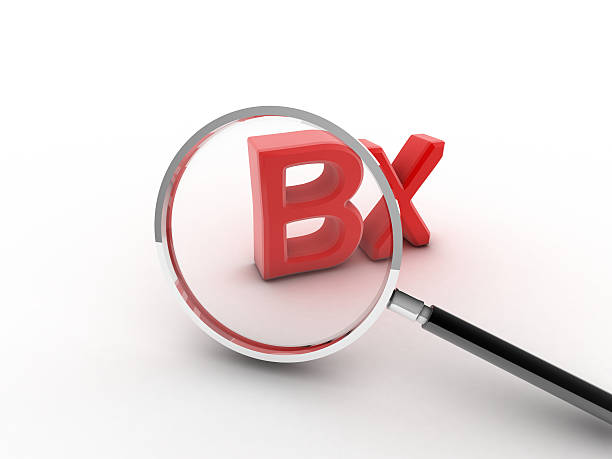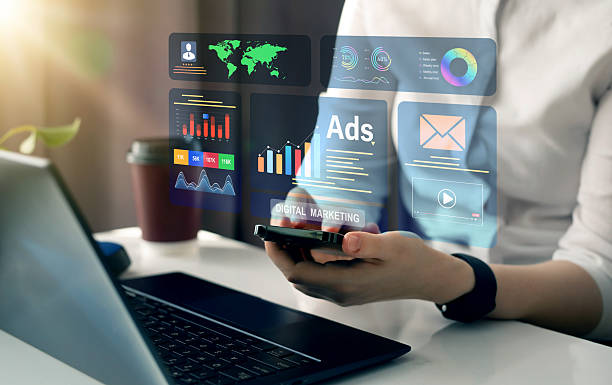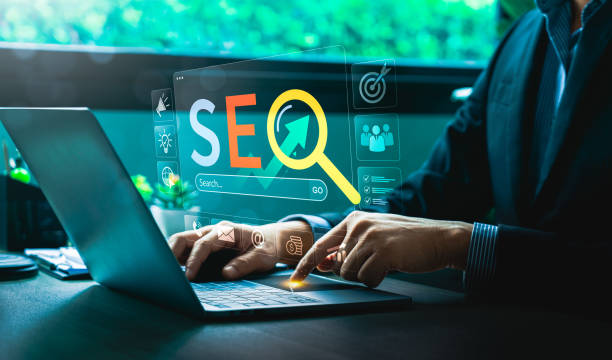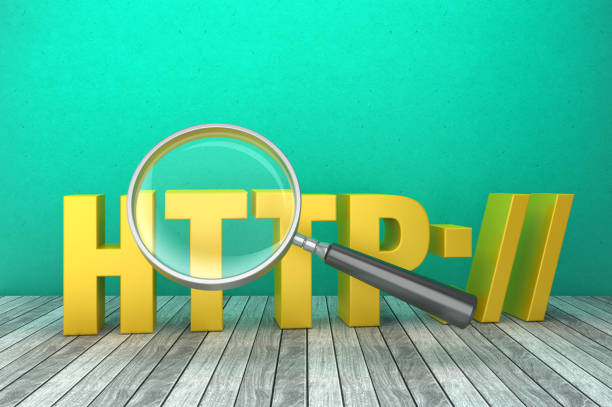What is On-Page SEO and Why is it Important?

#On-Page_SEO refers to a set of actions performed within a website to improve its ranking in search engines.
These actions include optimizing content, site structure, title tags, meta descriptions, URLs, and other internal website elements.
The importance of On-Page SEO lies in the fact that it helps search engines better understand the site’s content and display it to more relevant users.
Strong On-Page SEO can significantly increase a website’s organic traffic.
#On-Page SEO also helps improve user experience and encourages more visitors to stay on the site. By properly implementing On-Page SEO, you can show Google that your website is a reliable and valuable source of information.
Don’t forget that On-Page SEO is the foundation of a successful SEO strategy.
For example, by optimizing title tags and meta descriptions, you can increase your click-through rate (CTR) in search results.
By creating high-quality and relevant content, you can improve your site’s ranking for target keywords.
For more information about the importance of SEO, you can refer to Wikipedia.
Are you concerned about the low conversion rate of your online store and not achieving your desired sales?
RasaWeb is your specialized solution for having a successful online store.
✅ Significant increase in conversion rates and sales
✅ Professional and user-friendly design to attract customer satisfaction
⚡ Ready for a transformation in online sales? Get a free consultation!
Keyword Research – The Foundation of On-Page SEO

Keyword research is the first and most important step in any On-Page SEO strategy.
The goal of this research is to identify the words that users employ to search for information related to your business in search engines.
These keywords should be strategically used in your website’s content so that search engines can recognize the relevance of your content to users’ needs.
For keyword research, you can use various tools such as Google Keyword Planner, Ahrefs, SEMrush, and Moz Keyword Explorer.
With these tools, you can search for keywords related to your business and find search volume, competition level, and other related keywords.
After identifying keywords, you should prioritize them based on their importance and relevance to your business.
Primary keywords should be used in your title tags, meta descriptions, URLs, and the main content of your pages.
Secondary keywords can also be used in the body of the content and images.
Keep in mind that excessive use of keywords (#Keyword_Stuffing) can negatively impact your site’s ranking.
Therefore, try to use keywords naturally and in appropriate context within your content.
Content Optimization – The Heart of On-Page SEO

Content is king! This phrase is very common in the world of SEO, and the reason is the high importance of content in attracting organic traffic and improving site ranking.
High-quality, engaging, and relevant content that meets user needs can attract the attention of both search engines and users.
To optimize content, first, you must ensure that your content is unique and not copied.
Then, you should optimize your content for target keywords.
This means using keywords in the title, body text, images, and other content elements.
Also, you should regularly update your content to keep it fresh and relevant.
Creating diverse content can also help improve your site’s On-Page SEO.
You can use various types of content such as articles, videos, infographics, and podcasts to attract a wider audience.
Don’t forget that your content should be written for users, not just for search engines.
Therefore, try to create content that is easy and enjoyable to read.
Take On-Page SEO seriously and continuously improve your content.
| Content Type | SEO Benefits | Example |
|---|---|---|
| Articles | Attracting organic traffic, improving ranking for keywords | Educational article “Comprehensive Guide to On-Page SEO” |
| Videos | Increasing time on site, attracting more audience | Educational video “How to Optimize Images for SEO” |
| Infographics | Easy sharing, attracting backlinks | Infographic “Important Statistics about SEO” |
Optimizing Title Tags and Meta Descriptions

Title tags and meta descriptions are the first things users see in search results.
These tags play a crucial role in attracting users to your website.
The title tag should be short, engaging, and contain the page’s main keyword.
The length of the title tag should not exceed 60 characters to be fully displayed in search results.
The meta description should also be a summary of the page’s content and encourage the user to click on the link.
The length of the meta description should not exceed 160 characters.
Using keywords in meta descriptions can also help improve your site’s ranking.
Title tags and meta descriptions should be written uniquely for each page of the website.
Copying these tags from one page to another can negatively impact your site’s ranking.
For example, if your page is about “On-Page SEO for online stores,” your title tag could be “Online Store On-Page SEO – Comprehensive Guide,” and your meta description could be “Improve your online store’s On-Page SEO and increase your sales using this comprehensive guide.”
Did you know that a weak corporate website loses you many opportunities daily? Solve this problem forever with professional corporate website design by RasaWeb!
✅ Create a powerful and reliable image for your brand
✅ Attract targeted new customers and increase sales
⚡ [Get Free Website Design Consultation]
Optimizing URLs – A Suitable Structure for SEO

URLs, or Uniform Resource Locators, are one of the important On-Page SEO elements that are often overlooked.
URLs should be short, readable, and contain the page’s main keyword.
Using keywords in the URL can help search engines better understand the page’s topic.
URLs should have a logical and organized structure.
For example, if your page is about “On-Page SEO,” your URL could be: example.com/seo-dakheli.
Avoid using unclear characters and numbers in your URL.
Also, try to keep URLs as short as possible.
Long URLs can be difficult for users and search engines.
Creating a suitable URL structure can help improve user experience and your site’s ranking in search results.
Remember that On-Page SEO is not limited to keywords, but also includes site structure.
Image Optimization – Increasing Speed and SEO

Images play a significant role in your website’s visual appeal, but they can also have a positive impact on On-Page SEO.
To optimize images, first, you should save them in an appropriate format (such as JPEG or PNG).
Then, you should reduce the image size as much as possible to increase page loading speed.
Using image compression tools can help you in this regard.
Also, you should write appropriate alternative text (Alt Text) for your images.
Alt text helps search engines understand the image’s topic.
The alt text should be descriptive and contain the image’s main keyword.
Image file names should also be descriptive and contain keywords.
For example, if your image is about “On-Page SEO,” your file name could be seo-dakheli.jpg.
By optimizing images, you can increase your site’s page loading speed and improve your site’s ranking in search results.
Proper On-Page SEO can significantly help in this area.
Internal Linking – Creating a Strong Site Structure

Internal linking refers to creating links between different pages of your website.
Internal linking can help search engines better understand your site’s structure and identify more important pages.
Additionally, internal linking can help users easily navigate your site and find the information they need.
For internal linking, you should link to related pages.
For example, if you have a page about “On-Page SEO,” you can link to a page about “Keyword Research.”
The link text (Anchor Text) should be descriptive and contain the main keyword of the destination page.
Avoid using generic link texts like “click here.”
Internal linking should be done naturally and in an appropriate context.
Excessive use of internal links can negatively impact your site’s ranking.
#Linking helps in the integrity of the site structure.
| Element | Description | Best Practice |
|---|---|---|
| Title Tag | HTML tag that specifies the page title. | Contains main keyword, less than 60 characters |
| Meta Description | A summary of the page content displayed in search results. | Concise, engaging, contains keyword, less than 160 characters |
| Alt Text (Alternative Text) | Image description for search engines and users. | Descriptive, contains keyword |
| URL | The web address of the page. | Short, readable, contains keyword |
Website Speed Optimization – Better User Experience

Website loading speed is one of the important factors in SEO and user experience.
Users who wait for a website page to load are likely to leave your site and go to your competitors.
To optimize site speed, you should use website speed testing tools such as Google PageSpeed Insights and GTmetrix.
These tools help you identify your site’s speed issues and find solutions to fix them.
Some solutions for site speed optimization include reducing image sizes, using caching, optimizing code, and using a CDN (Content Delivery Network).
Optimizing site speed can have a positive impact on your site’s ranking in search results.
Google gives a better ranking to sites that have high loading speeds.
On-Page SEO also pays special attention to site speed.
Does your current corporate website not reflect your brand’s credibility and power as it should? RasaWeb solves this challenge for you with professional corporate website design.
✅ Increase visitor credibility and trust
✅ Attract more targeted customers
⚡ Click to get a free consultation!
Website Responsiveness – Mobile Compatibility

With the increasing use of mobile phones, website responsiveness (mobile compatibility) has become one of the important SEO factors.
A responsive website is one that automatically adapts to the screen size of various devices (such as mobile phones, tablets, and computers).
Google gives a better ranking to responsive websites.
To ensure your site’s responsiveness, you can use the Google Mobile-Friendly Test tool.
This tool shows you whether your site is suitable for mobile phones.
If your site is not responsive, you should redesign it using responsive design techniques.
On-Page SEO requires attention to detail.
Continuous Review and Improvement of On-Page SEO

On-Page SEO is an ongoing process and requires continuous review and improvement.
You should regularly check your site’s On-Page SEO performance and implement necessary changes.
To review On-Page SEO performance, you can use tools like Google Analytics and Google Search Console.
These tools help you track your site’s organic traffic, identify the keywords users use to enter your site, and find your site’s technical issues.
Using this information, you can continuously improve your site’s On-Page SEO and increase your site’s ranking in search results.
On-Page SEO requires patience, and its results become visible over time.
Don’t forget that On-Page SEO is one of the most important factors for success in online marketing and can help you attract more customers and increase sales.
On-Page SEO should be continuously updated.
Frequently Asked Questions
| Question | Answer |
|---|---|
| What is On-Page SEO? | It refers to the set of actions performed within a website to improve its ranking in search engines. |
| Why is On-Page SEO important? | Because it helps search engines better understand your site’s content and structure, and it improves user experience. |
| What are the most important elements of On-Page SEO? | Title and meta descriptions, keywords, URL structure, quality content, image optimization, internal linking, and site speed. |
| How to optimize Title Tag and Meta Description? | The title should include the main keyword and be engaging, and the meta description should be a compelling summary of the content with relevant keywords. |
| What is the role of keywords in On-Page SEO? | Keywords help search engines understand what the page content is about and should be used naturally and intelligently in the text. |
| How is image optimization done for On-Page SEO? | By compressing size, using descriptive file names, and filling the Alt tag with relevant descriptions and keywords. |
| What is Internal Linking and what is its purpose? | It is connecting different pages of the site to each other. This helps distribute Page Authority and improves search engine crawling. |
| What is the importance of site loading speed in On-Page SEO? | High speed improves user experience and is one of the important ranking factors for search engines like Google. |
| What impact does website responsiveness (Mobile-Friendliness) have on On-Page SEO? | Given the increase in mobile users, responsiveness is essential for providing a suitable user experience across all devices and for Google’s mobile-first indexing priority. |
| What are the important content-related factors in On-Page SEO? | Originality, quality, comprehensiveness, readability, proper use of headings (H1, H2,…) and regular content updates. |
And other services of Rasa Web advertising agency in the field of advertising
- Smart Marketplace: Designed for businesses seeking to increase sales through user experience customization.
- Smart Marketplace: An innovative platform for improving click-through rates with marketing automation.
- Smart Marketplace: A professional solution for increasing website traffic with a focus on attractive UI design.
- Smart UI/UX: Transform customer acquisition with the help of user experience customization.
- Smart Customer Journey Map: Professional optimization for customer acquisition using key page optimization.
And more than hundreds of other services in the field of internet advertising, advertising consultation, and organizational solutions
Internet Advertising | Advertising Strategy | Advertorial
Resources
What is On-Page SEO?
Complete Guide to Website On-Page SEO
What is On-Page SEO?
Content SEO: A Comprehensive Guide
? Are you ready to take your business to the top in the digital space? RasaWeb Afarin Digital Marketing Agency, with years of experience in providing innovative solutions, including WordPress website design, SEO, and advertising campaign management, is your partner on the path to success. With us, your business future is brighter.
📍 Tehran, Mirdamad Street, next to Bank Markazi, Kazeroon Jonoubi Alley, Ramin Alley, No. 6



